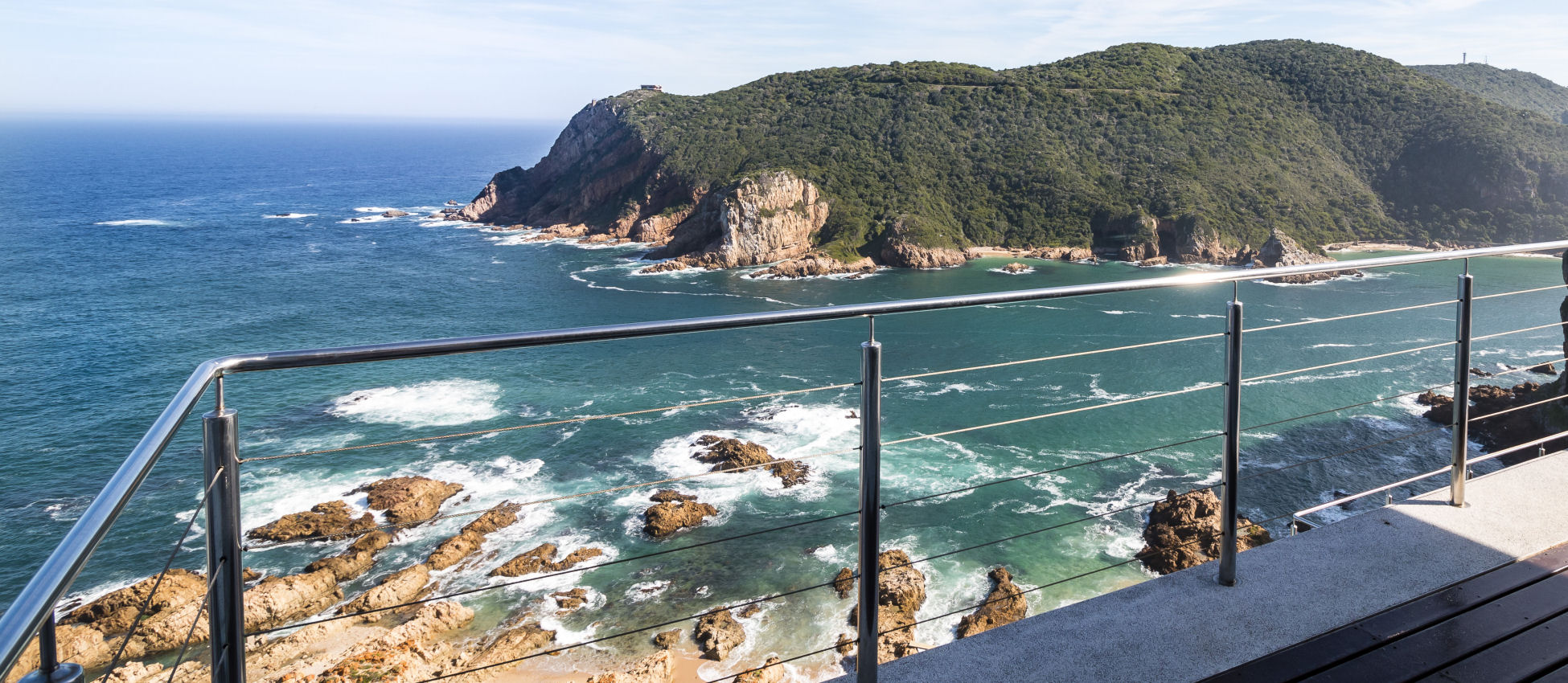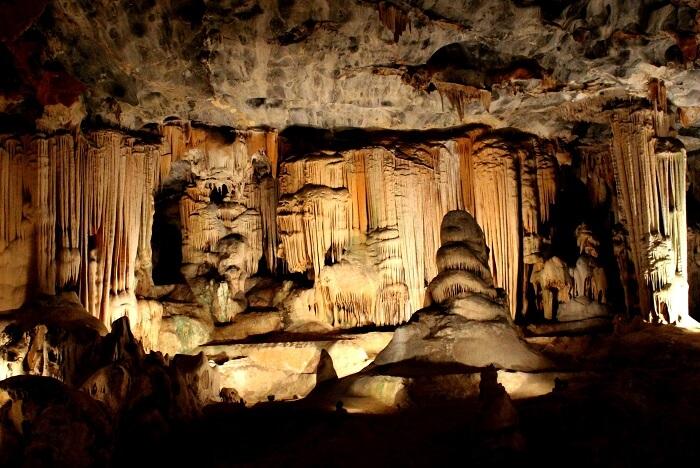The Garden Route is a 300-kilometre (190 mi)[1] stretch of the south-eastern coast of South Africawhich extends from Witsand in the Western Cape to the border of Tsitsikamma Storms River in the Eastern Cape. The name comes from the verdant and ecologically diverse vegetation encountered here and the numerous estuaries and lakes dotted along the coast. It includes towns such as Knysna, Plettenberg Bay, Mossel Bay, Great Brak River, Little Brak River, Wilderness, Sedgefield and Nature’s Valley; with George, the Garden Route’s largest city and main administrative centre. Recently the towns of Albertinia, Riversdale, Heidelberg, Ladismith, Calitzdorp, Oudtshoorn, De Rust and Uniondale have been added to the Garden Route district and municipality.
1. Robberg Nature Reserve (Plettenburg Bay)
About eight kilometers from the popular coastal town of Plettenberg Bay, the magnificent Robberg Nature Reserve is a national monument and a hiker’s paradise with a variety of trails and other things to do. It sits on a four-kilometer-long peninsula, at the foot of the Mountain of the Seal, where some of the rocks date back 120 million years, and caves show evidence of prehistoric man.
The reserve is an important breeding area for many water birds, and hikers may also spot whales and dolphins (in season), as well as seals basking on the beach and bobbing in the crashing surf. Their awe-inspiring predator, the great white shark, also lurks in the waters here.
Before embarking on a hike, visitors should stop by the visitor center at the parking lot to learn about the local flora and fauna. From here, hiking trails lead through the peninsula and range in length and difficulty, from a gentle two-kilometer stroll to the challenging 10-kilometer hike around the rocky and rugged point past pristine beaches and along precipitous sea cliffs.
Hikers should wear sensible shoes and take binoculars, sun protection, plenty of water, and a picnic to enjoy while gazing at the spectacular coastal scenery. A hut accommodates hikers who wish to stay overnight.
2. Storms River Suspension Bridge
A highlight of the magnificent coastal reserve Tsitsikamma National Park (now part of Garden Route National Park) is the Storms River Suspension Bridge. Stretching for 77 meters, the bridge spans the swirling waters of the river mouth as they merge with the Indian Ocean. Standing on the bridge, less than seven meters above the water, visitors can feel the exhilarating force of nature all around them.
The hike to the bridge is also beautiful. The trail winds through bird-filled forests, past waterfalls and stunning sea views. Keep a lookout for dassies (rock hyrax) that live among the rocks near the bridge. For those who want a longer walk, the 42-kilometer Otter Trail runs between Storms River Mouth and Nature’s Valley with overnight accommodation in huts along the route.
This section of Garden Route National Park is also home to many species of birds, as well as monkeys, smaller antelopes, and diverse marine life. Dolphins and whales are frequently sighted off the coast. Not far from Storms River is the Big Tree, a gigantic yellowwood tree said to be 800 years old, making it South Africa’s oldest as well as its largest tree. For a dose of adrenaline, visitors can experience an aerial view of these ancient forests on a Tsitsikamma Canopy Tour.
3. Knysna Heads and Head Forest
Sitting on a lagoon between lush forests and the sparkling sea, Knysna is one of the most popular towns on the Garden Route. On the seaward side, two giant crags, called the Knysna Heads, flank the mouth of the lagoon. Visitors can explore the area from the water on a cruise or along walkways with plenty of panoramic viewpoints overlooking the treacherous sea below and the jagged multi-hued rocks along the shore. Cafés offer scenic patios to soak up the views, and seafood lovers should sample some delectable local specialties while visiting Knysna.
In the lush forests surrounding Knysna, scenic trails lace along rivers and waterfalls, where large herds of elephant once roamed. Among the flora are giant yellowwood trees, some of them between 400 and 800 years old, as well as stinkwoods and the pretty pink-flowered Cape chestnut. Hikers may also spot antelope and a diversity of birds, including the Knysna loerie.
Favorite hikes include the Circles in the Forest; the 3.4-kilometer Jubilee Creek trail; and the 5.6-kilometer Millwood Mine Walk, which leads to the remains of a gold diggers’ settlement.
4. Knysna Elephant park
At Knysna Elephant Park, animal lovers can enjoy a rare wildlife experience with a herd of rehabilitated elephants. Under the careful supervision of experienced handlers, visitors can walk with the elephants, feed them, and interact with these majestic pachyderms.
Operating for more than 20 years, the park was the first sanctuary in South Africa to accommodate orphaned African elephants. Many of the residents were rescued from culls or circuses and rehabilitated by the staff. The experience begins with an educational presentation and safety briefing before visitors interact with the elephants at the level they choose, as long as the elephants are happy to cooperate. This is a must-do for wildlife lovers.
5. Cango Caves
About 29 kilometers north of Oudtshoorn, at the foot of the Great Swartberg, are the impressive Cango Caves. In earlier centuries, these dripstone caverns were occupied by Bushmen, who left rock drawings, little of which can now be distinguished. Visitors can choose between a Heritage Tour or Adventure Tour. Both take visitors into a series of huge chambers with impressive stalactites and stalagmites enhanced by spectacular lighting effects.
The Van Zyl Hall is named after the man who first ventured into these dark caverns in 1780. This enormous 70-meter-long, 17 meter-high chamber is brilliantly floodlit and accommodates 1,000 people. It has excellent acoustics, and concerts are occasionally staged here.
The Adventure Tour starts at the same point but continues deeper into the cave system and requires some wriggling and climbing. Advance bookings for the tours are essential.




